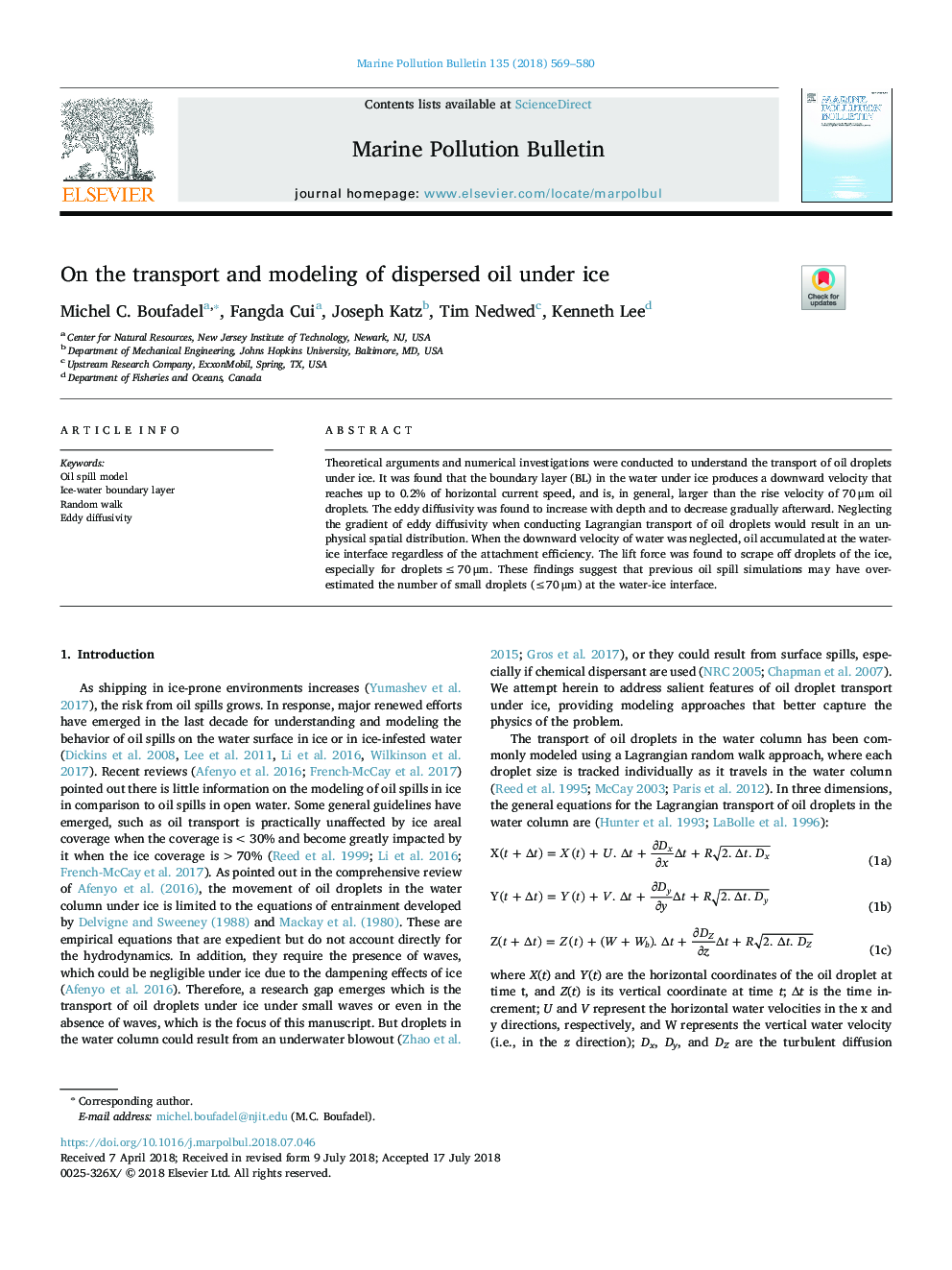| Article ID | Journal | Published Year | Pages | File Type |
|---|---|---|---|---|
| 8870732 | Marine Pollution Bulletin | 2018 | 12 Pages |
Abstract
Theoretical arguments and numerical investigations were conducted to understand the transport of oil droplets under ice. It was found that the boundary layer (BL) in the water under ice produces a downward velocity that reaches up to 0.2% of horizontal current speed, and is, in general, larger than the rise velocity of 70â¯Î¼m oil droplets. The eddy diffusivity was found to increase with depth and to decrease gradually afterward. Neglecting the gradient of eddy diffusivity when conducting Lagrangian transport of oil droplets would result in an unphysical spatial distribution. When the downward velocity of water was neglected, oil accumulated at the water-ice interface regardless of the attachment efficiency. The lift force was found to scrape off droplets of the ice, especially for dropletsâ¯â¤â¯70â¯Î¼m. These findings suggest that previous oil spill simulations may have overestimated the number of small droplets (â¤70â¯Î¼m) at the water-ice interface.
Related Topics
Physical Sciences and Engineering
Earth and Planetary Sciences
Oceanography
Authors
Michel C. Boufadel, Fangda Cui, Joseph Katz, Tim Nedwed, Kenneth Lee,
